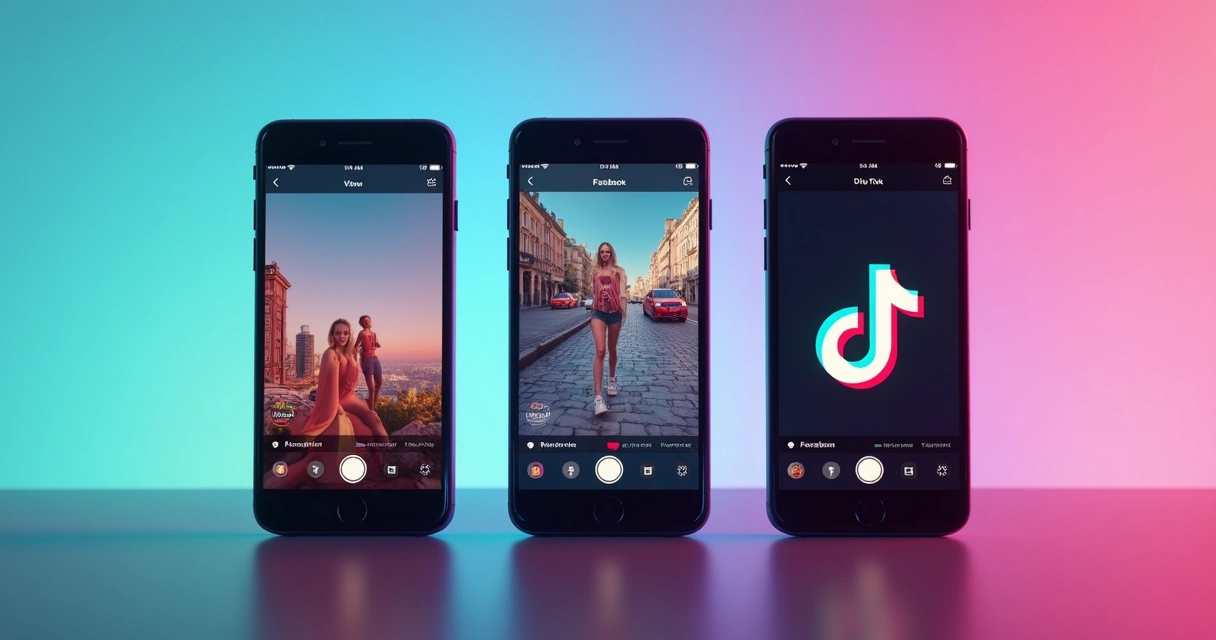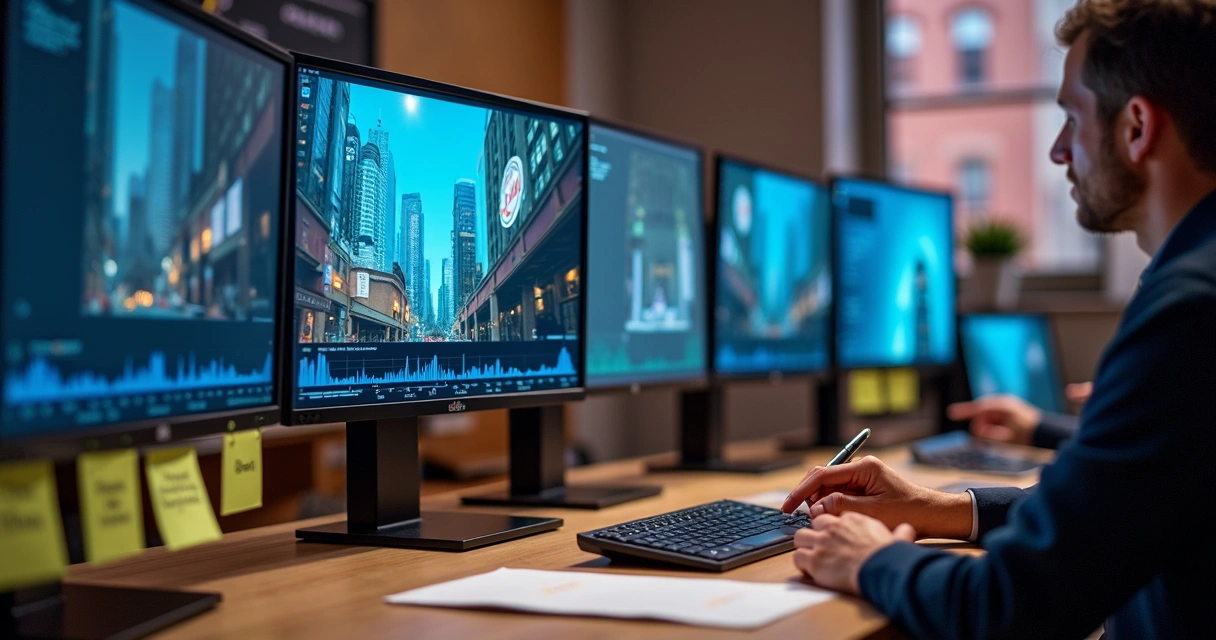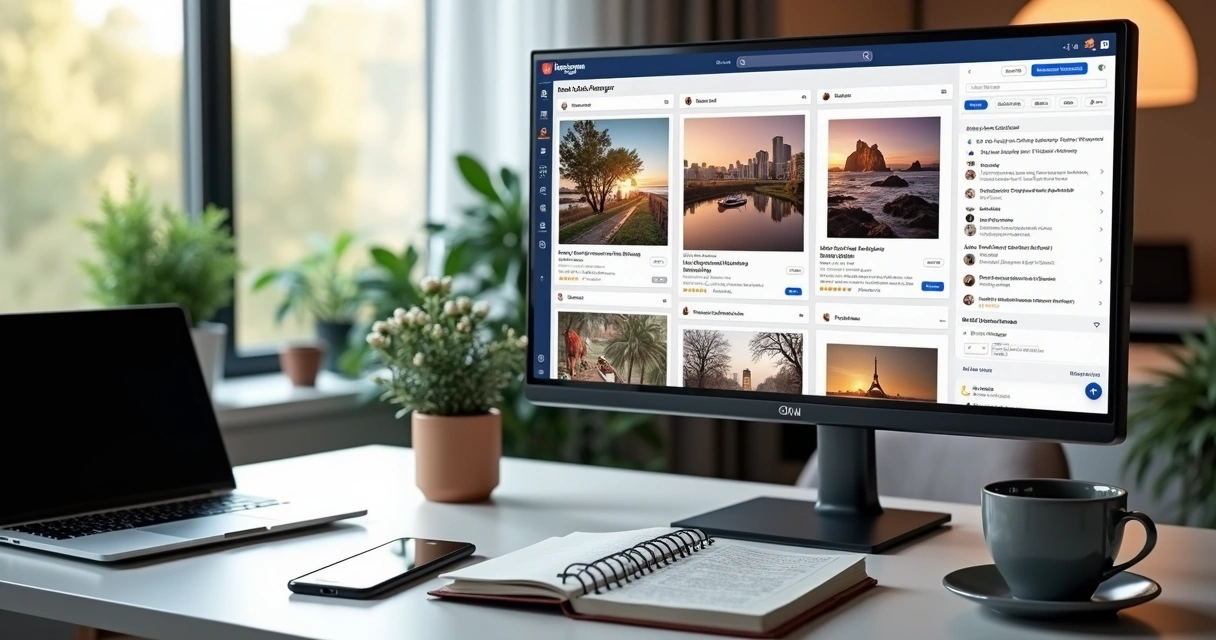Scrolling through social media, you’ve probably noticed how much video stands out. It catches the eye, moves quickly, and stays in your memory. Businesses, agencies, and solo marketers know this, too. But there’s a challenge: how do you go from idea to a strong video ad, ready for social networks, without the grind of old-school production cycles? This practical guide uncovers the process, with an honest look at what works, new AI-driven shortcuts, and how platforms like Automads are changing the game for creative teams of all sizes. No magic—just real steps and strategies.
Why video ads matter so much in social campaigns
Let’s start with the elephant in every marketing room: why do social marketers invest so heavily in video ads for their campaigns? It’s more than trend hopping. Video offers movement, a story, and often emotion in as little as a few seconds.
- People tend to remember video content way more than still images or plain text.
- Short video ads fit naturally in social feeds, engaging people without asking them to leave their scroll.
- Multiple platforms, especially Meta properties, have preferred video, pushing those posts further and making them more visible.
Today, almost every ambitious team is looking to tap into this collective attention span. But the hurdle is clear—high-quality, on-brand video creative takes time and resources. Or at least, it used to.
How AI is changing video ad production, cost, and speed
Not long ago, creating a fresh campaign meant hiring actors, booking studios, and endless rounds of editing. Now, with AI stepping in, the barriers are dropping. Studies like the IAB report on generative AI for video ads say that 86% of advertisers use or plan to use GenAI for video. Projected numbers show AI content might make up 40% of video ads by 2026. That’s not an accidental surge—small and mid-sized brands especially want fast results without burning through budgets.
AI lets you make more, test more, and do it all without long waits.
Take Automads as an example. Their platform streamlines how creative teams spin up fresh ad assets. Seconds after a briefing, you might have static images, real-looking actors, or even short-form videos to split test. This fits right into what teams need for rapid A/B testing, maintaining brand consistency, and slashing creative costs.

The step-by-step process: from blank brief to finished social ad
Every creative process has a flow. The difference today? Much of the manual grind is automated or simplified, making space for testing and learning, not just execution. Here’s how marketing teams, agencies, and solo creators can build a high-performing video ad for social platforms:
1. start with a clear goal and target audience
Every effective video ad starts with a purpose. What do you want viewers to do—buy, click, follow, or just remember your brand? Defining this shapes everything that follows. Next, clarify your audience. The tone, visuals, and pace for Gen Z aren’t the same as for executives or niche professionals.
- Action step: Write a single sentence outlining your goal, and jot down one or two ideal customer types you’re after.
2. select the right ad format and social platform
Not all video ads are created equal. Instagram Stories, Facebook in-feed videos, and TikTok short-form clips each have unique specs and user behaviors. Matching your creative format to the platform is not optional—it drives everything from layout to runtime.
- Square (1:1): Great for Instagram and Facebook feeds.
- Vertical (9:16): Essential for Instagram Stories and TikTok.
- Landscape (16:9): Works for Facebook Video and YouTube ads.
Automads, for instance, provides tools like an AI Facebook Ad Generator, allowing you to select the right format before you even write your script. The result? No more last-minute resizing or awkward edits.
3. build your core message and visual hook
The first seconds matter. People scroll fast and decide even faster. Your ad needs a clear message, backed by visuals or sounds that spark curiosity. AI video platforms can propose hooks or even voice-over scripts based on the target outcome you set earlier.
- Ask yourself: “Would I stop scrolling for this?”
4. use templates and branded elements for consistency
Keeping your visual identity intact saves a lot of headache, especially if you need multiple ad versions. Advanced editors and ad makers, like those inside Automads, let you save brand kits (logos, colors, fonts) and insert them into every video variation automatically.
Consistency earns trust.
Templates aren’t just about speed. They protect your brand from off-tone mistakes, keep compliance happy, and let you update creative for seasonal campaigns without starting over. This is where tools like the AI Instagram Ad Generator shine: you generate and version different creative types, all within the same style guide.

5. generate multiple versions and test variations
One ad usually isn’t enough. To find what works, you’ll want to create and test different headlines, actors (yes, even virtual presenters), product shots, and calls-to-action. AI-powered creative platforms do most of this automatically—think of it as instant A/B and multivariate testing without the long lag times between drafts.
The AI Ad Video Generator from Automads lets you quickly create several alternatives, changing copy, visuals, and even background music. You see what resonates before pushing your full budget behind one version.
6. fine-tune with advanced editing features
Templates are powerful, but sometimes that final tweak makes the difference. Integrated editors let you adjust pacing, swap music tracks, or add subtitles for silent viewing. Subtitles matter—a lot of users watch without sound. Background music can also set the pace and keep attention, especially for shorter videos.
- Use royalty-free soundtracks or those included in your ad maker.
- Preview your ad in platform mockups to see how it fits in a typical feed or story.
Automads and similar platforms often allow one-click subtitle generation and music selection from curated libraries, so these finishing touches become quick, not a chore.
7. collaborate, review, and get team input
Even when using AI, team insights are golden. Share drafts with marketing or brand leads for feedback. Most platforms now have simple collaboration tools—think comments, version history, and side-by-side comparisons. Keeping all feedback in one place avoids confusion and wasted effort.
Some of the best ideas come from a quick hallway chat or a Slack comment that you almost overlooked.
8. upload, publish, and track performance
Once finalized, upload your ad directly to Meta Ads, TikTok, or whatever network you’re using. Make sure you’re following each platform’s requirements for specs, duration, and formats. Run small-budget tests if you can before scaling up. And crucial: measure everything you can. Watch-through rates, click-through rates, and conversions will tell you more than any creative brainstorm.
- Ad managers provide deep insights for iterating fast.
- Look for patterns—what’s working for Stories often differs from what rocks on in-feed.
9. repeat and refine
If there’s one constant, it’s change. Audiences shift, social platforms roll out new features, and what worked last month may flop today. The good news? With AI-powered tools and templates doing the heavy lifting, rapid creative and testing cycles become routine, not exhausting.
Great video ads are usually built, not born.
Choosing the right video format for each campaign
You might have an awesome creative idea, but if the format doesn’t fit where you’re posting, it’ll flop. Choosing your shape and length is nearly as important as the content itself.
- Stories and Reels: Vertical video, up to 60 seconds for most platforms. Snappy, in-your-face messaging with a clear outcome or interaction cue.
- In-feed video: Works best square or vertical, keep it under 30 seconds for the widest reach. Animation and text overlays help when autoplay is muted.
- TikTok: Short, vertical, often trend-driven or using music that fits current moods. Humor and authenticity matter here.
To support this, Automads offers dedicated format-first generators like AI TikTok Ad Generator. You can pre-select the ideal canvas, begin with platform-optimized templates, and get instant feedback on how your ad aligns with feed trends.

Using ad templates and editing features to stay on brand
It doesn’t matter how many versions you create—audiences expect consistency. Switching tone or visuals too wildly between campaigns can confuse or even turn off potential leads. That’s why using ad templates, music beds, and branded intros/outros matters so much.
- Ad templates mean you start with structure, not a blank slate.
- Brand kits ensure your logo, fonts, and colors appear the same… every time.
- Built-in libraries of actors, voice-overs, or background music speed up the rest.
Across Automads’ AI Ad Creative Generator, these features come together to let you multiply your output while keeping every version “on brief.” It just takes a little upfront setup, then you can generate, tweak, and publish in minutes rather than days.

How AI-driven video creation helps teams, cuts costs, and saves time
The once-painful process of churning out many ad variations is now mostly automatic. Research from the IAB generative AI adoption study highlights how real-time data, connected TV expansion, and focus on measurable outcomes have made AI the tool of choice for future-facing marketers. Smaller teams, especially, can do more with less. But even large agencies are benefitting from speed and cost reductions.
- AI allows instant creation of video scripts, on-screen actors (who look like real people), and voice-overs.
- Editing and reworking is vastly faster—just update the brief, and regenerate the asset.
- Templates and automation make compliance and brand police happy.
- Budgets can be focused on distribution and testing, rather than expensive shoots.
I’ve seen agencies go from spending a week on scripts and casting to launching ten video ad variants in a day. Campaigns that would have required a full production cycle are now creative sprints.
The future of video ads is speed and scale, not slow perfection.
Tips for collaborating, uploading, and optimizing for better return
Putting your new video creative live is just the beginning. To actually improve ROI, a few practical steps make all the difference:
- Don’t work alone. Use the platform’s collaboration and comment features, even for short “gut check” feedback sessions.
- Save your brand assets and standard intros/outros so you don’t remake them every time.
- Before uploading, preview how the ad looks natively on each social platform—font size, subtitles, and visual focus change by device.
- Try at least 2-3 ad versions per campaign for quick testing. Pause the underperformers fast.
- Look for patterns in what wins—sometimes it’s the actor, sometimes it’s the music, sometimes a visual trick.
- Use analytics, but don’t ignore gut feeling. Data plus creative intuition usually wins.
The best part about using an AI-first platform? You can easily duplicate successful videos, make small tweaks, and relaunch. It’s like compounding your learnings, ad after ad.
Conclusion
To sum it up, creating compelling video ads for social campaigns is faster, less complicated, and more affordable than ever before. With platforms like Automads, your creative team—or even just you—can take an idea from brief to live ad in minutes. Leverage AI-driven video and ad creative generators, rely on templates for brand consistency, test everything, and adjust quickly. That’s the secret to multiplying your ad output without multiplying your headaches.
If you want to see how simple and impactful these new workflows can be, try building your next social video ad with Automads. We invite you to visit us and experience firsthand how AI can transform your marketing process. No credit card needed to start, just curiosity and a creative spark.
Frequently asked questions
What is a video ad campaign?
A video ad campaign is a series of video-based advertisements designed and launched with a unified goal, such as increasing brand awareness, generating leads, or encouraging purchases. These campaigns target audiences across social media platforms, using different video styles and messages to engage, inform, and persuade viewers.
How do I create effective video ads?
To create effective video ads, start by defining your campaign’s goal and your target audience. Pick the right format and platform for your ad, craft a clear visual hook and message, use strong templates and branded elements, and produce several versions for testing. Platforms like Automads let you use AI to generate, edit, and optimize these quickly. Always review performance data so you can refine and improve results over time.
What are the best tips for video ads?
Keep your message clear and simple, especially in the first few seconds. Always use subtitles since many users watch with sound off. Stick to one key idea per ad and use brand colors and symbols consistently. Test multiple versions, analyze results, and tweak for improvements. Don’t forget about the technical requirements of each social platform.
Which platforms work best for video ads?
Instagram, Facebook, and TikTok are highly effective for social video ads because of their visual-first interfaces and large, engaged audiences. Each platform favors different formats: Stories and Reels thrive on Instagram, in-feed works well on Facebook, and short-form trends dominate TikTok. Matching your creative to the platform is key to maximizing reach and impact.
How much does video ad production cost?
Traditional video ad production—think hiring actors, booking studios, manual editing—can cost from hundreds to thousands of dollars per video. However, with AI-powered tools like those from Automads, costs decrease dramatically because you need fewer resources and can generate many versions quickly. Most of your budget can then go toward distributing and testing ads rather than producing them.





